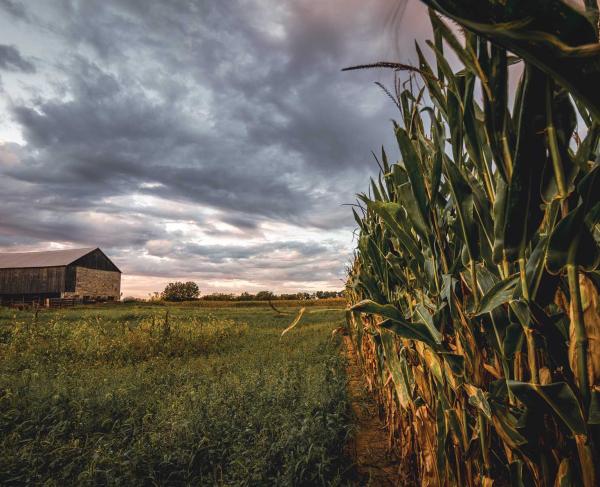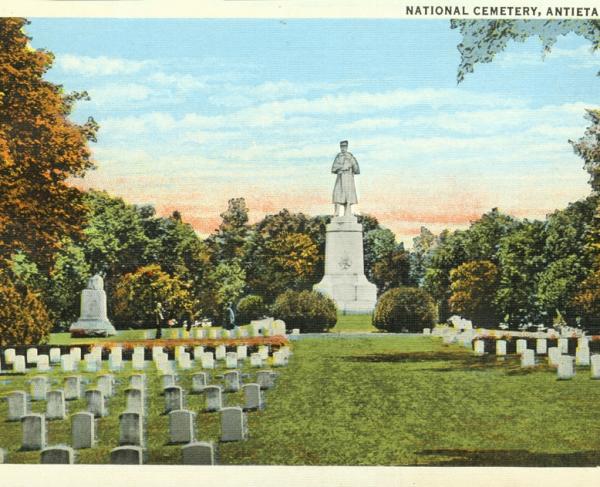The Civil War and American Art

The Civil War Trust had the opportunity to meet with Eleanor J. Harvey, Senior Curator at the Smithsonian American Art Museum. The museum's new exhibit, The Civil War and American Art, explores the impact of the war on American art. Four videos accompany this article.
Civil War Trust: This new exhibit of Civil War art has received wide-spread acclaim. What was your inspiration for creating this exhibit?
Eleanor J. Harvey: What inspired me to develop this exhibition was what I came to see as the erasure of the Civil War from the analysis of American art. What I found was, unless you were working on an artist directly involved in the War, or who addressed it directly in his artworks, the war simply started, ended, and seemed to leave no footprint. After 9/11 I realized there was no way a four-year long Civil War could leave no trace on an artist’s life; my goal was to research what each artist was doing during the war, and unearth the Civil War-related layer of meaning that resides in some of the finest works of art made during those turbulent years.
Part of the reason for this erasure I think stems from the Bicentennial in 1976. We began to focus intently on American art as a valuable expression of our cultural heritage. Landscape painting in particular came to be seen as a symbol of America’s ambitions and aspirations. Because most landscape painters did not enlist in the army or paint obvious war-related paintings, they were overlooked in a discussion of the effects of the Civil War. We simply didn’t know how to account for the war in their works. That bothered me—I felt this war left its imprint everywhere: on literature, poetry, sermons, speeches, and all over diaries and letters. It made no sense to me that artists would be immune to the war.
My research uncovered extensive use of landscape—terrain, weather, and meteorology—to describe the destabilizing effects of the war. Storms rose as tensions rose with war looming; erupting volcanoes were a symbol of social unrest over abolition and slavery; meteors linked to John Brown crisscrossed the skies; Auroras signaled an apocalyptic judgment on both sides. In short, our ancestors described the turbulence of the time using language suffused with the landscape—and America’s landscape painters used that same visual vocabulary to create paintings that function on one level as the emotional barometer of the nation’s psyche.
At the war’s outbreak were American artists well prepared to cover the Civil War as an artistic subject?
EJH: Although war loomed—and seemed imminent to many—during the 1850s, when it started it was nonetheless a shock. Artists thought they were prepared for a short and glorious war, and there are newspaper accounts of an artist who painted the backdrop landscape in anticipation of painting in the heroic details of the Union victory at Manassas in July 1861. Needless to say he did not chronicle the federal retreat, and that episode stands as a kind of metaphor for visualizing this war—it defied expectations and frustrated attempts to chronicle it in the moment. It takes time, and hindsight, to figure out who the heroes are in any war, which are the pivotal battles. I wanted to know what artists painted in the middle of the war—when there was no way of knowing how long it would last, who would win, or what might happen next. That approach—the war without hindsight—meant most of the paintings I brought together dealt with the war in a more elliptical way, responding to current events, political cartoons, and songs and poetry—often using the same visual vocabulary to describe what America was enduring.
I guess it shouldn’t be surprising that landscapes are heavily represented in the exhibit. Tell us more about how landscapes were important to the artists of this time.
EJH: Landscape painting before the war was the single most prominent genre in American art. We looked to landscape paintings—and the actual features they presented—as emblems of our country’s power, prowess, and prospects for the future. Niagara Falls, natural Bridge—these icons were an important part of our core visual vocabulary. We took pride in these scenes, and found spiritual significance in the landscape—even calling American the “New Eden.” When the Civil War began, Cain killed Abel—brother against brother—and that is grounds for expulsion from that Garden of Eden. This war would make it impossible to see our landscape, and ourselves, apart from its destruction. But no one had ever researched the way in which landscape painters responded to the war—because most of them never painted a battlefield or enlisted in the army. They were viewed as sideline players, watching, but disengaged. My research—which was all grounded in primary documents: letters, diaries, exhibition reviews, speeches, sermons, poems, essays, and the like—pointed to a vast literary vocabulary in which landscape metaphors played a central role in describing a world coming apart at the seams. The paintings themselves developed from this rich matrix of documents—and the art reviews made it clear the man on the street easily transferred metaphors about the coming storm when God would run out of patience on the issue of slavery (Abraham Lincoln, 1858) to paintings of brooding storms waiting to break forth (Heade, 1858 and 1860). Those corollaries were important anchors for this exhibition.
This exhibit features a number of iconic photographs from the Civil War. Were battlefield photographers artists or were they just seeking to document the war?
Moran based this painting on a poem by Henry Wadsworth Longfellow titled “The Slave in the Dismal Swamp” from the perspective of a fugitive slave, and his terror being pursued by slavers and a pack of hunting dogs. Here a black family is being pursued by three slave-hunters and their dogs. The black man has killed one dog, and watches as two other dogs chase him and his family into the swamp. I read several slave narratives in which escapees recounted terrifying experiences of such pursuit, but who never gave up their determination to be free. Moran painted this work for an abolitionist patron in England; in 1864 he painted a second, smaller version for the Philadelphia Sanitary Fair—a public display of what I suspect was his personal position in favor of the abolition of slavery, seen through this haunting image.
Did Civil War paintings and photographs have much impact on the home fronts of the Civil War?
EJH: These paintings and photographs did make an impact at the time they were made. It varied from painting to painting, and my research focused on how each artist grappled with the war, and how the paintings he made were conceived, displayed, and reviewed at that time—to measure the impact each work had. New York was the center of the American art world, with numerous newspapers and weeklies covering exhibitions and visits to artists’ studios. Diarists like George Templeton Strong wrote about these events as well. Oliver Wendell Holmes, Sr. made the case for the impact of the photographs—he felt many would be locked away in drawers, as they brought back the trauma of each battle. He wasn’t sure viewers could handle them—acknowledging their visceral power, and dreading their impact at the same time. That spoke very eloquently to me about how these images played out for those who came home, or stayed home.
Even when an artist didn’t intend a painting to focus on the war, circumstances would literally conscript it—Sanford Gifford’s “The Coming Storm” happened to be on view when Lincoln was assassinated. At the time, the painting was owned by Edwin Booth—a famous Shakespearean actor and brother of the president’s assassin. Herman Melville wrote a poem about this painting, comparing the turbulent storm to the state of Edwin’s mind and the grief of the nation. Overnight, this painting was recast as a visual eulogy to our fallen President. No one emerged from the war years unscathed; these paintings and photographs bear witness to that.

Learn More: The Smithsonian American Art Museum
Related Battles
12,401
10,316


